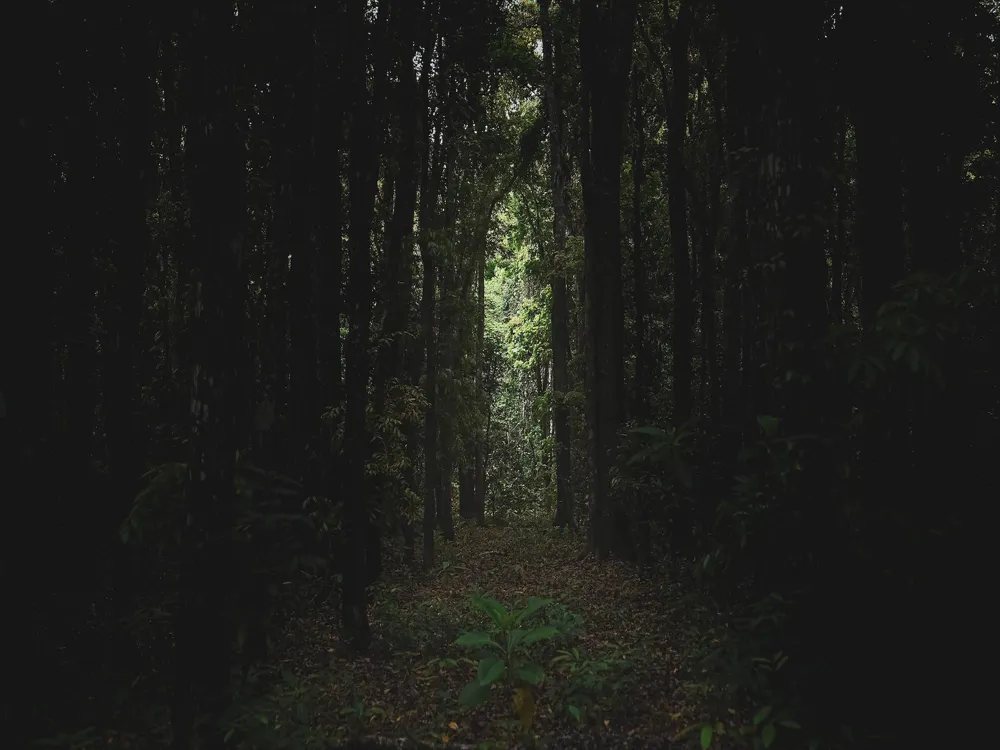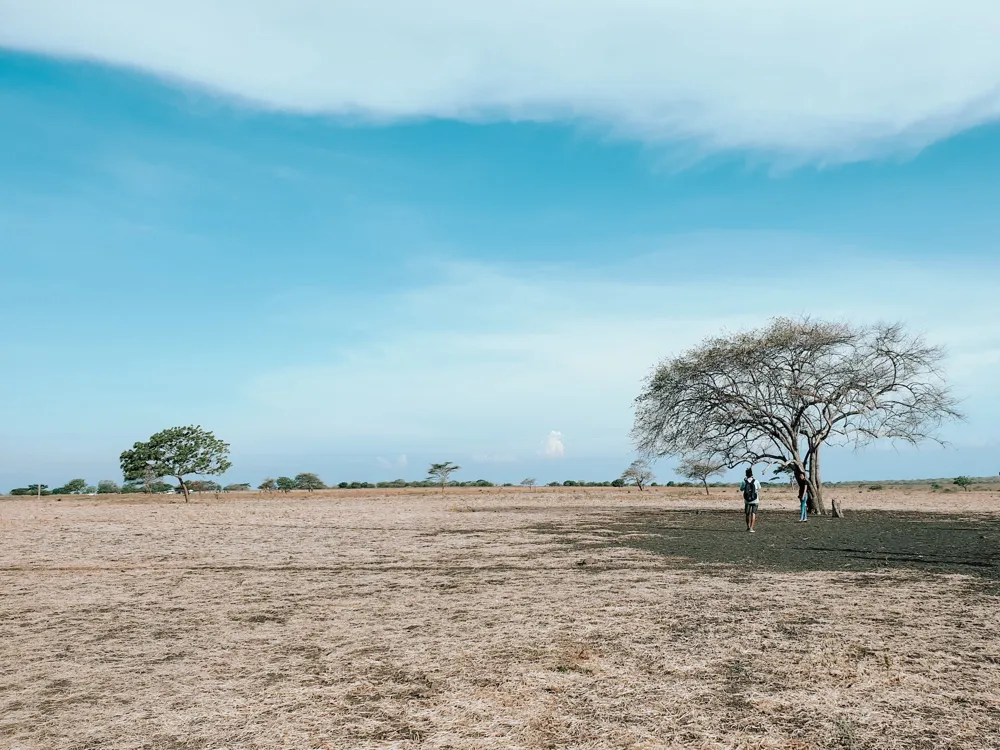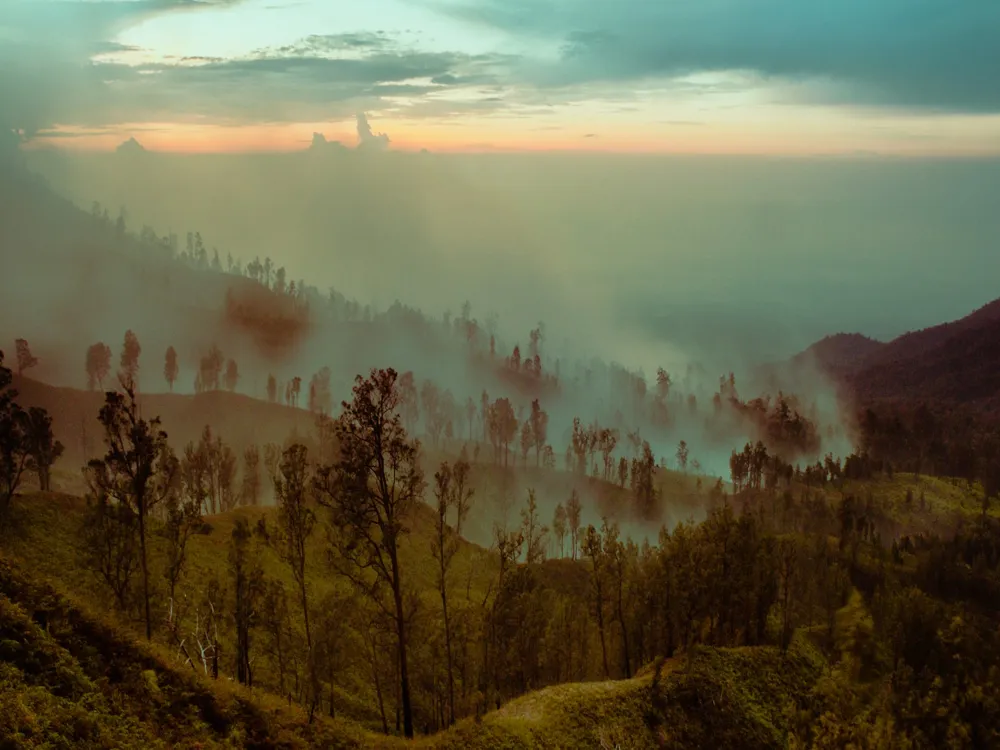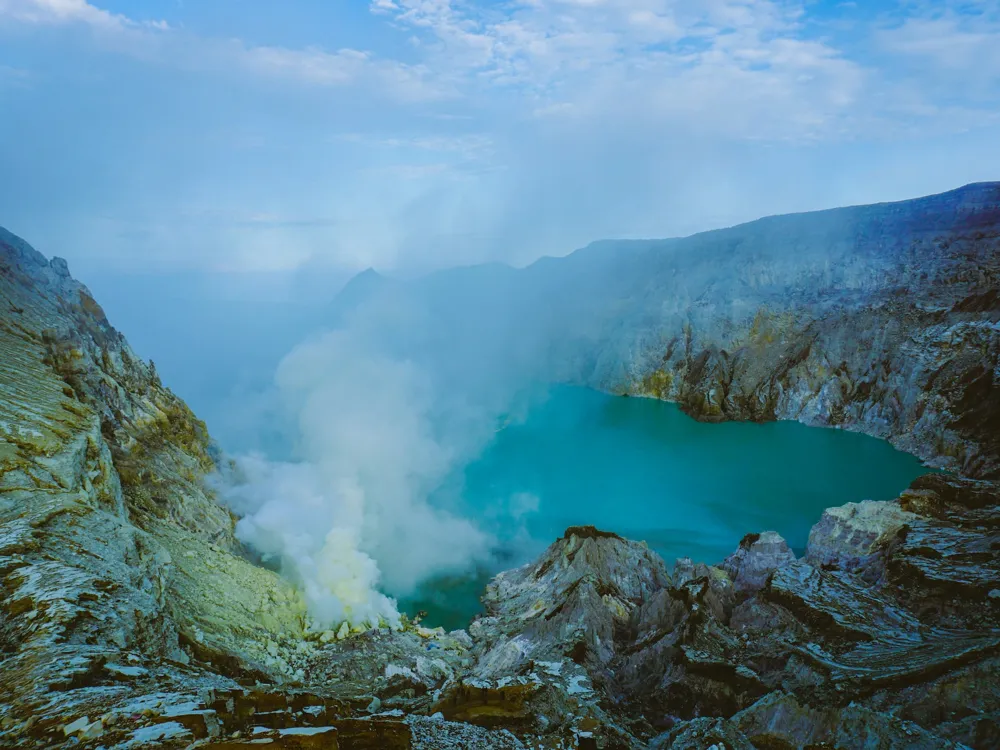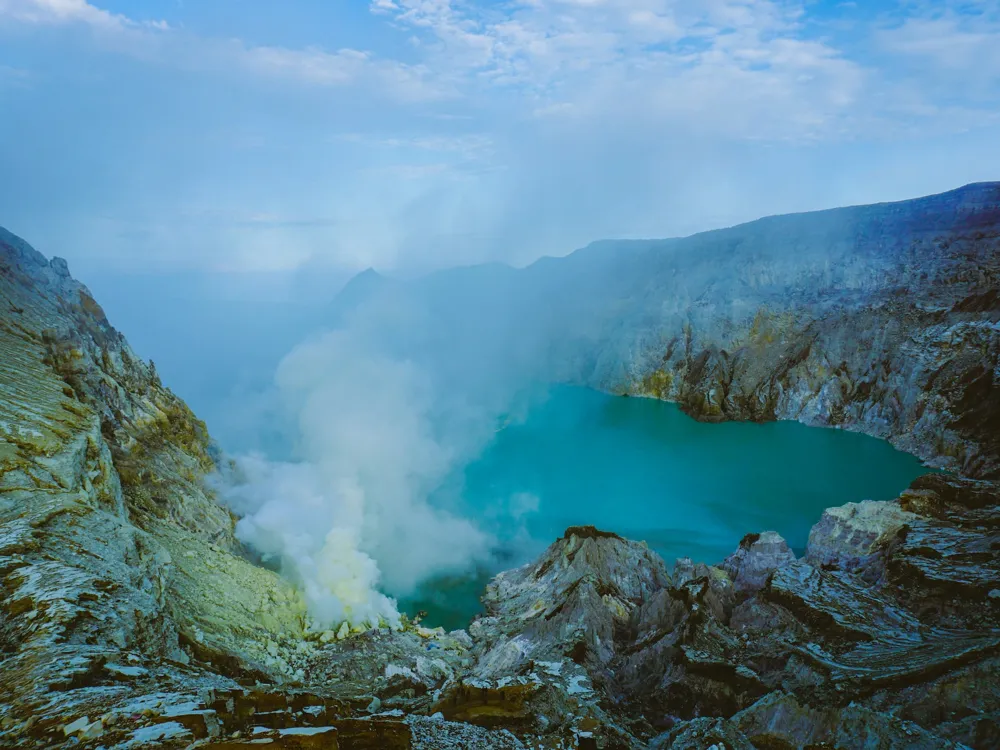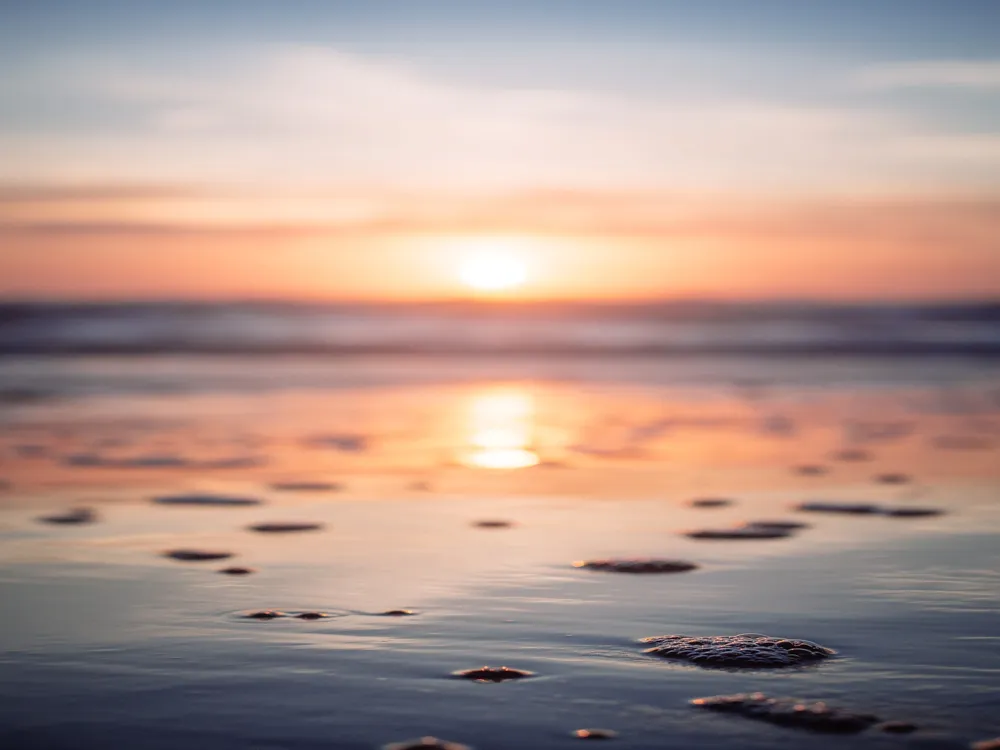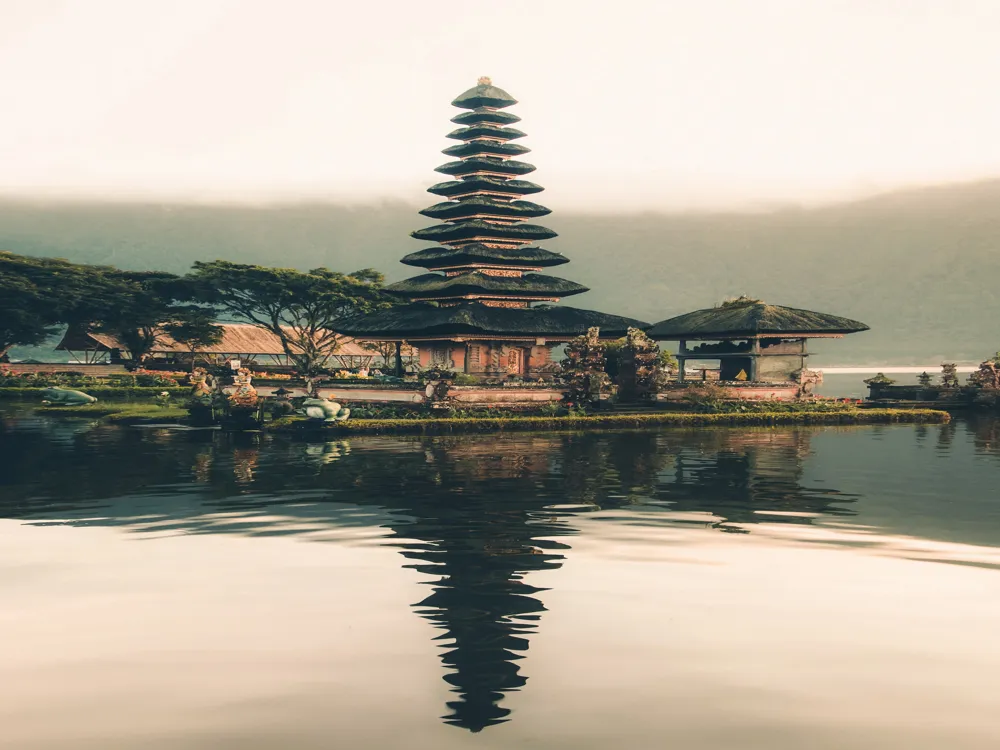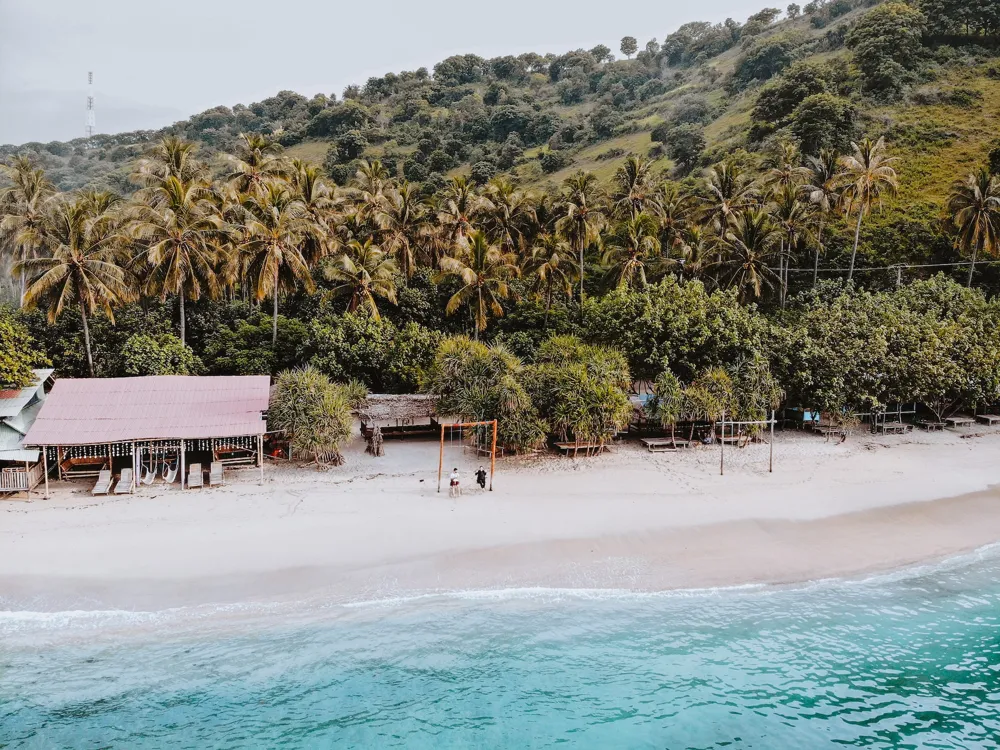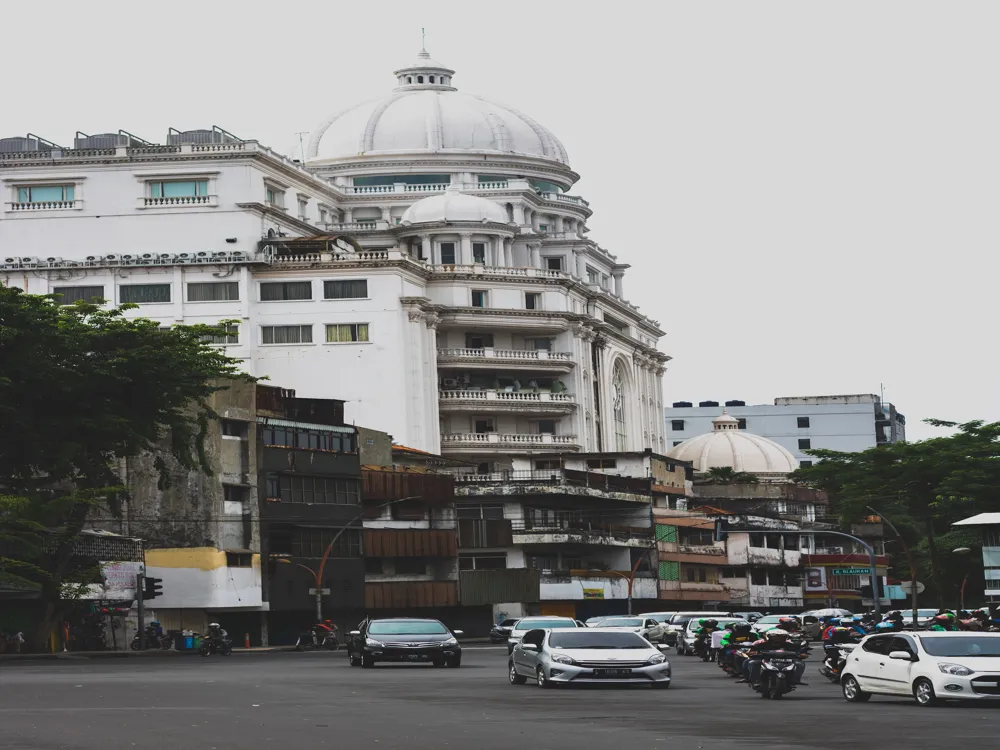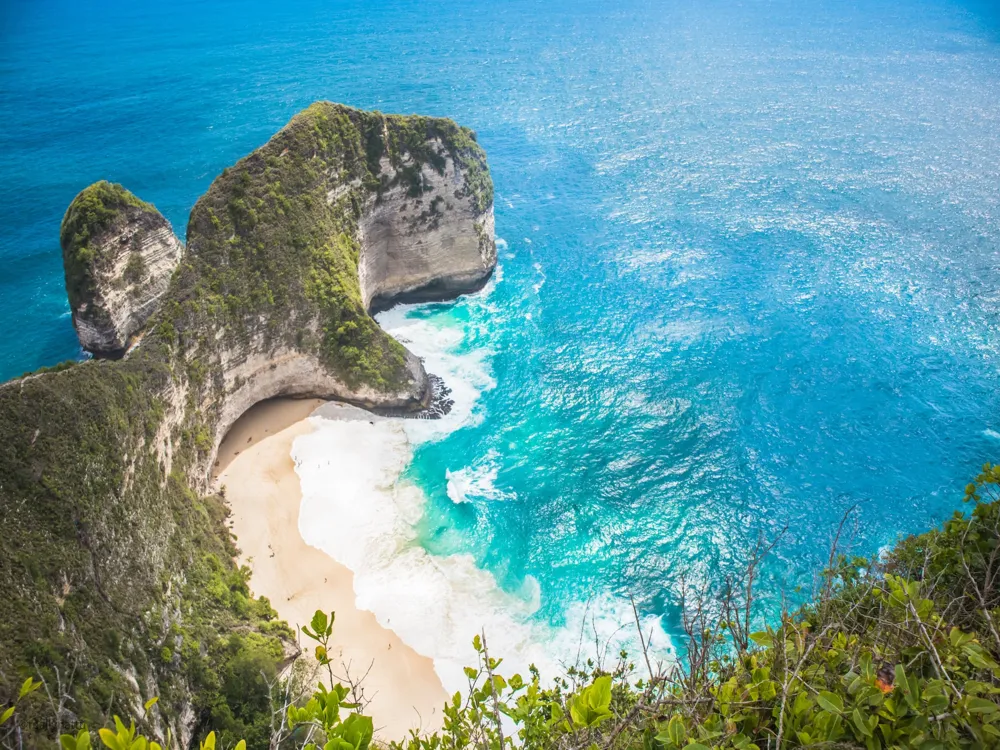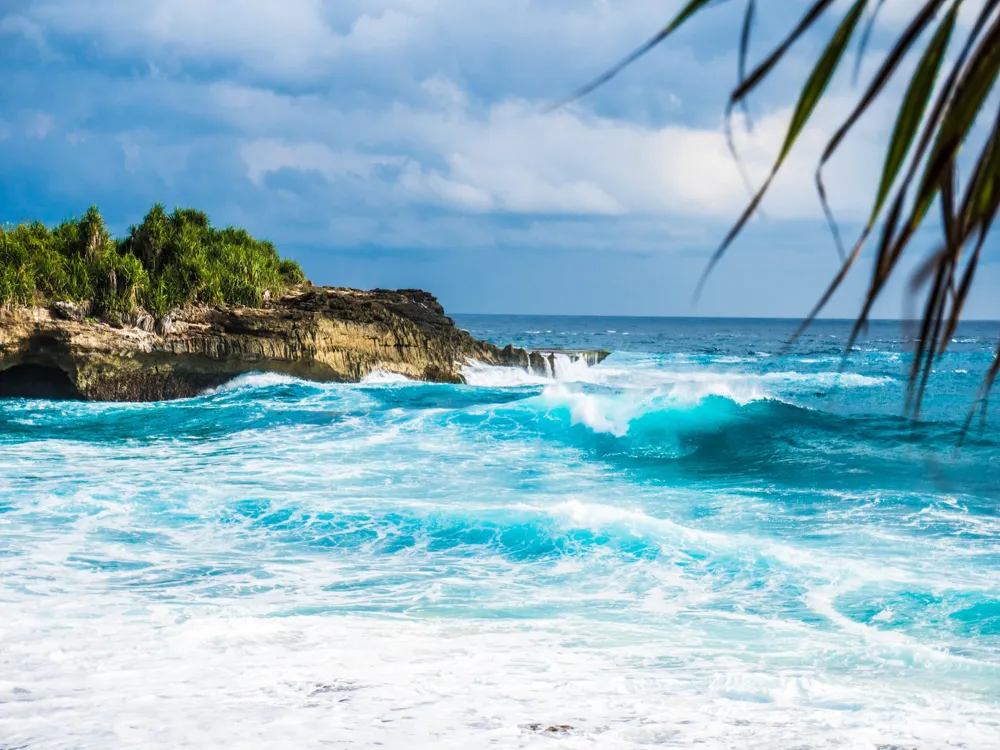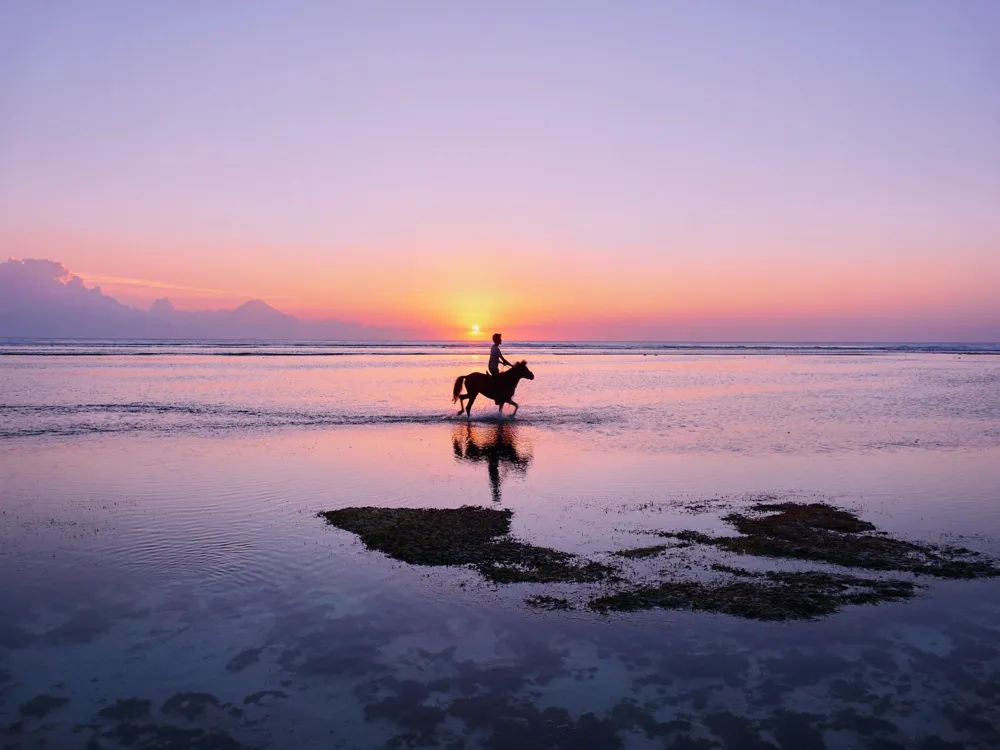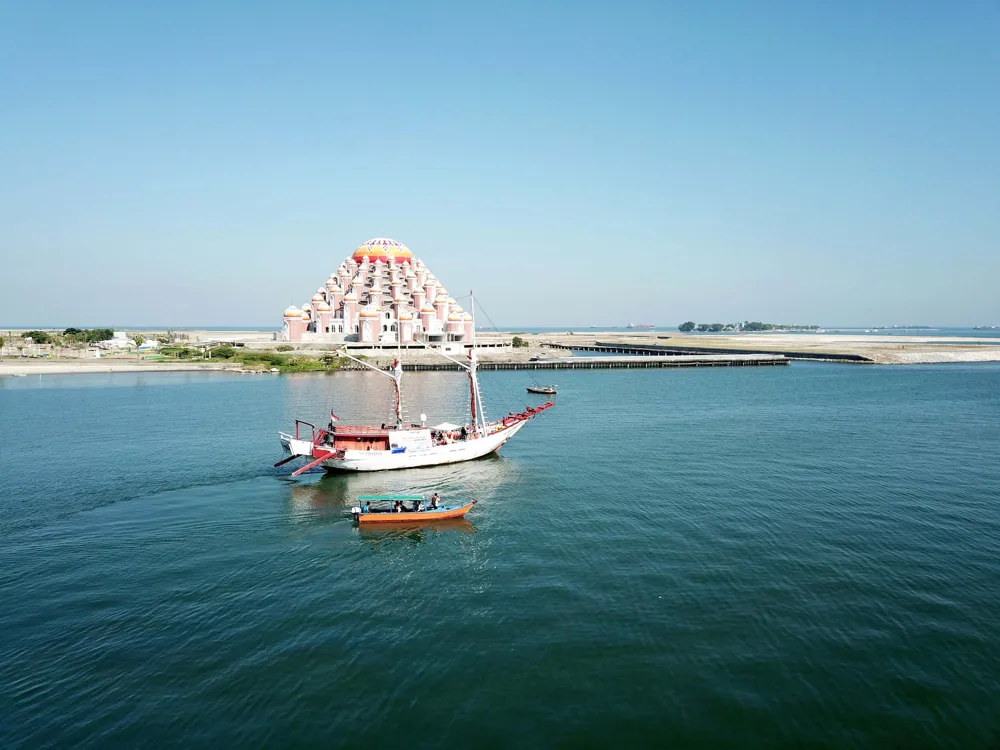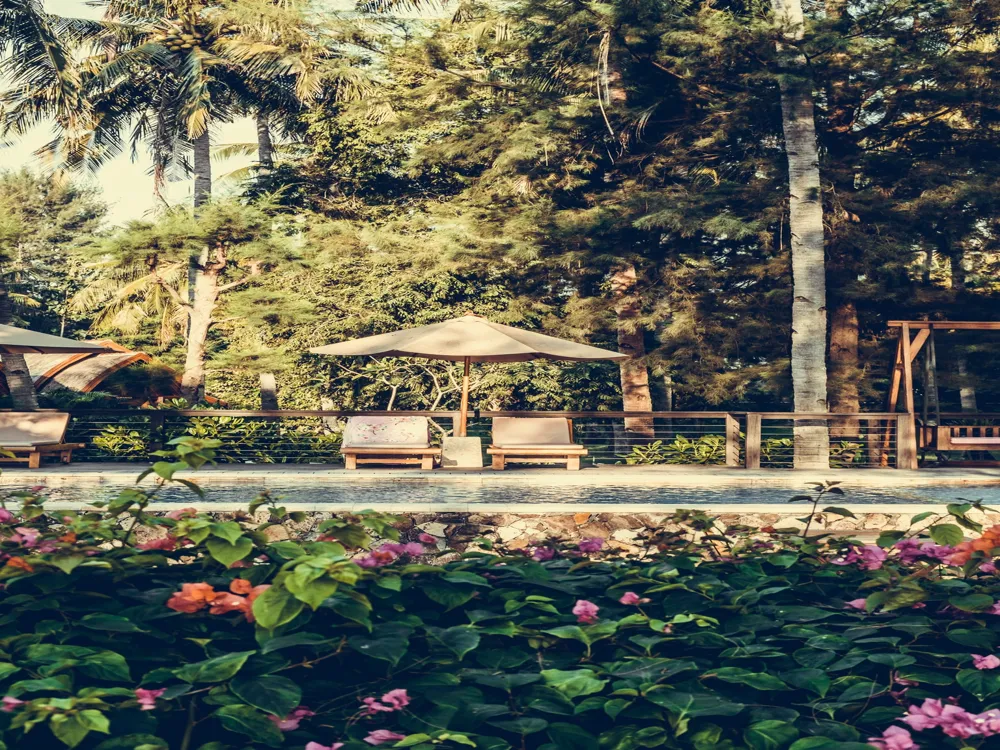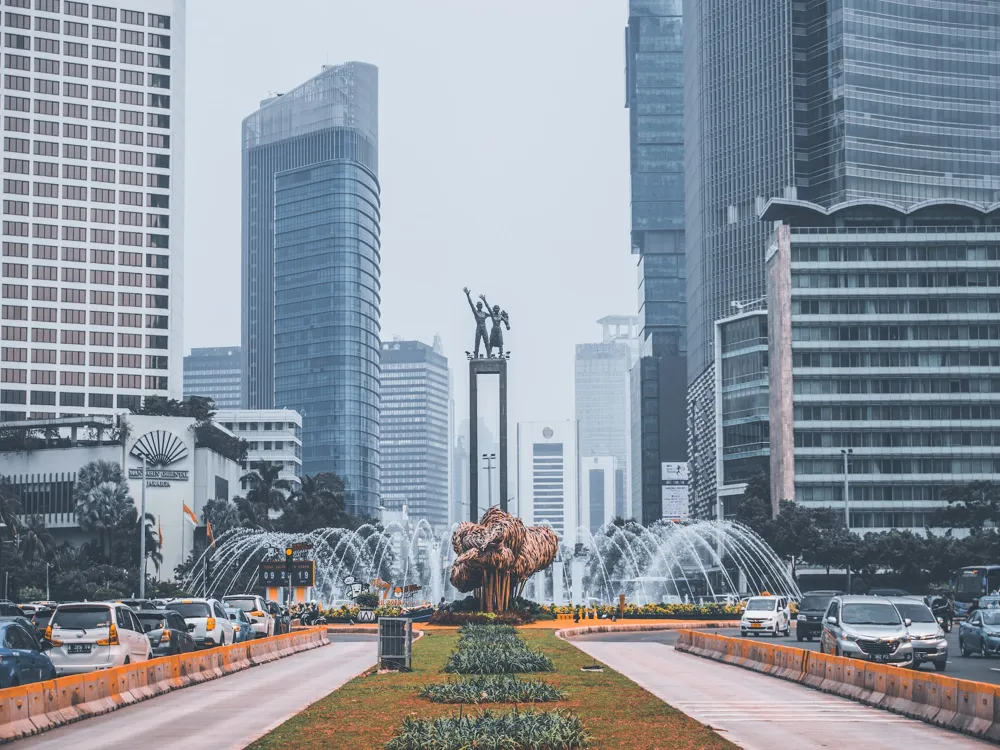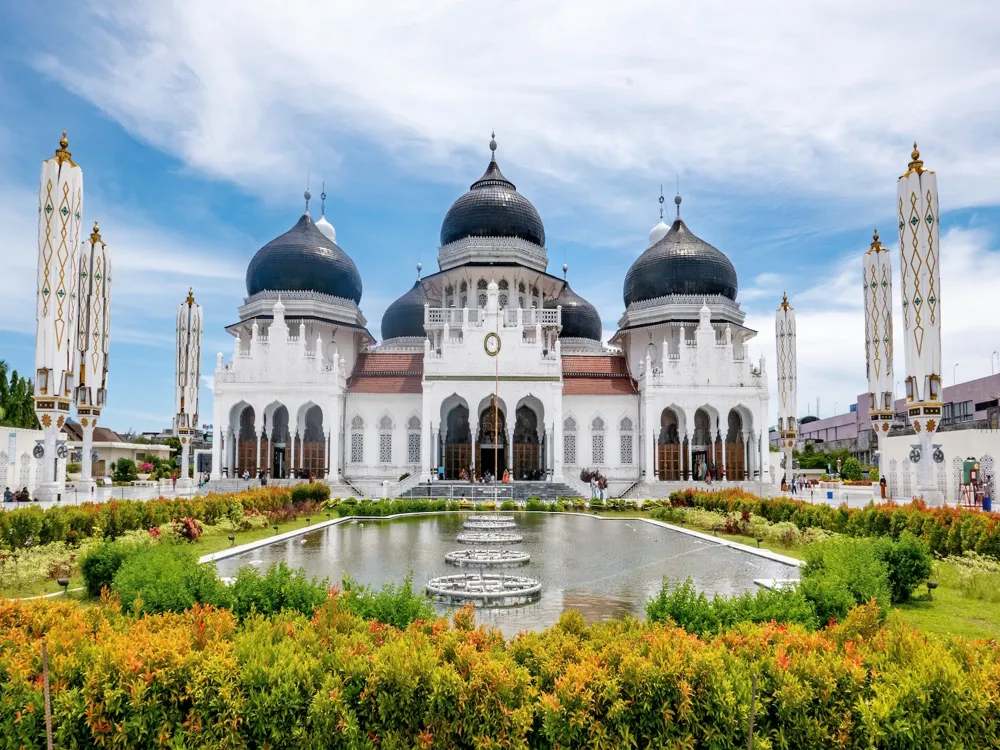Nestled in the eastern part of Java, Indonesia, Kawah Ijen is a stunning natural wonder that draws thousands of tourists each year. Known for its turquoise-colored acidic crater lake and unique blue flames, Kawah Ijen offers an awe-inspiring glimpse into the Earth's geothermal activity. The volcano is part of the Ijen volcano complex, a group of composite volcanoes in the Banyuwangi Regency of East Java, Indonesia. The journey to Kawah Ijen is an adventure in itself, taking visitors through lush landscapes and traditional villages. Once at the crater, the view is nothing short of spectacular. The lake's eerie, luminescent hue, a result of its high sulfur content, contrasts strikingly with the rugged surroundings of the crater. The site is also famous for its sulfur mining operations, where local miners brave hazardous conditions to extract sulfur from the crater. Besides its natural beauty, Kawah Ijen plays a significant role in the study of volcanic activity, offering valuable insights into the complex geological processes that shape our planet. The area surrounding the volcano is rich in biodiversity, including several endemic species, making it a haven for nature enthusiasts and researchers alike. However, Kawah Ijen is not just a natural wonder; it's also a testament to human endurance and the spirit of the local communities who live in harmony with this active volcano. The miners' daily treks up the crater, carrying heavy loads of sulfur, are a poignant reminder of the human-nature relationship in this unique landscape. While Kawah Ijen is a natural formation and not an example of human-made architecture, its geological structure is a marvel of natural architecture. The volcano's crater, with its steep walls and deep lake, is a result of centuries of volcanic activity. The crater of Kawah Ijen, approximately 200 meters deep and 960 meters in diameter, is a caldera formed by the collapse of a massive volcano. Over time, the crater has filled with acidic water from the volcanic gases, creating one of the world's largest acidic lakes. The lake's acidity, with a pH close to zero, is a result of the sulfuric acid that forms when sulfur gases from the volcano dissolve in the water. The unique blue flames visible at Kawah Ijen are caused by ignited sulfuric gases. These gases emerge from cracks in the volcano at high pressure and temperature, igniting upon contact with air and resulting in the mesmerizing natural phenomenon. The surrounding landscape of Kawah Ijen is marked by the contrast between barren volcanic rock and lush vegetation. This juxtaposition creates a unique ecosystem, where hardy plants and wildlife have adapted to the harsh, sulfuric environment. - Ensure physical fitness: The trek to Kawah Ijen is strenuous and requires good physical condition. - Leave no trace: Keep the area clean by carrying out all trash and belongings. - Respect local customs: Be mindful of local traditions and customs in nearby villages. Kawah Ijen is accessible from Banyuwangi, a town in East Java. Visitors can fly into Banyuwangi's Blimbingsari Airport, which has flights from major Indonesian cities. From Banyuwangi, the journey to Kawah Ijen can be made by hiring a private vehicle or joining a guided tour. The drive to the base of the volcano takes approximately 1.5 to 2 hours. From the base, visitors embark on a 3 km hike to reach the crater. The hike is steep and challenging, and it's advisable to start the trek early in the morning to witness the sunrise over the crater. Alternative routes to Kawah Ijen include traveling from the city of Surabaya or the town of Bondowoso. These routes are longer but offer their own scenic views and experiences. Regardless of the starting point, the journey to Kawah Ijen is an adventure that offers a glimpse into the heart of one of Indonesia's most remarkable natural wonders. Read MoreOverview of Kawah Ijen, Banyuwangi
Architecture of Kawah Ijen
Tips When Visiting Kawah Ijen
Preparation and Safety
- Wear appropriate clothing: Dress in layers and wear sturdy, comfortable hiking boots.
- Bring necessary gear: A flashlight, gas mask, and water are essential for a safe visit.
- Check the weather: The weather can change rapidly; be prepared for rain and cold temperatures.
- Hire a local guide: A guide can provide valuable insights and ensure a safer experience.Respect the Environment
- Stay on marked paths: This helps preserve the delicate ecosystem and prevents accidents.
- Avoid disturbing wildlife: Maintain a respectful distance from any animals encountered.Cultural Sensitivity
- Support the local economy: Consider purchasing goods or services from local businesses.
- Be considerate of miners: Keep a safe distance and do not hinder their work.How To Reach Kawah Ijen
Kawah Ijen
Banyuwangi
NaN onwards
View banyuwangi Packages
Weather :
Tags : Volcano
Entry Fees : IDR 100.000 on weekdays
IDR 150.000 on weekends and holidays
Planning a Trip? Ask Your Question
Banyuwangi Travel Packages
View All Packages For Banyuwangi
Top Hotel Collections for Banyuwangi

Private Pool

Luxury Hotels

5-Star Hotels

Pet Friendly
Top Hotels Near Banyuwangi
Other Top Ranking Places In Banyuwangi
View All Places To Visit In banyuwangi
View banyuwangi Packages
Weather :
Tags : Volcano
Entry Fees : IDR 100.000 on weekdays
IDR 150.000 on weekends and holidays
Planning a Trip? Ask Your Question
Banyuwangi Travel Packages
View All Packages For Banyuwangi
Top Hotel Collections for Banyuwangi

Private Pool

Luxury Hotels

5-Star Hotels

Pet Friendly







